


























Community leaders call on elected officials to address urgent community needs for housing, teacher pay, and transit.
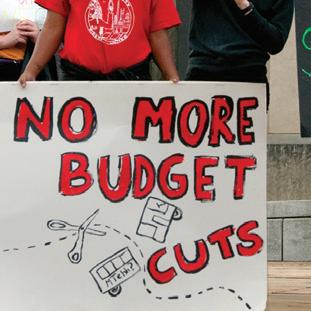

The former first lady spent Mother’s Day with a sold out crowd at the Ryman Auditorium as the last stop of her book tour.





Contributor vendor Mary Ann says selling the newspaper has made her stronger and introduced her to a new community.


Our vendors have written about faith, love, school, sobriety, stigmas, Tennessee, and a journey to find a missing wallet.
Contributor Board
Cathy Jennings, Chair Tom Wills, Bruce Doeg, Demetria Kalodimos, Ann Bourland
Amanda Haggard • Linda Bailey • Tom Wills • Joe Nolan • Ridley Wills II
• Jennifer A. • Vicky B. • Cynthia P. • David "Clinecasso" C. • Bryan H. • Harold B. • Mr. Mysterio • Alvine • Kaitlin Joc • Bailey Basham • Bailey Basham • Derrick W. • June P. • Mary B. • William B. • Ken Martin • Michael Chavarria





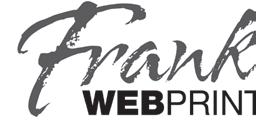
Cathy Jennings • Tom Wills • Joe First
• Andy Shapiro • Michael Reilly • Ann Bourland • Patti George • Linda Miller •
Deborah Narrigan • John Jennings • Barbara Womack • Colleen Kelly • Janet Kerwood • Logan Ebel • Christing Doeg • Laura Birdsall
• Nancy Kirkland • Mary Smith • Andrew Smith • Ellen Fletcher • Anna Katherine Hollingsworth • Michael Chavarria
Will Connelly, Tasha F. Lemley, Steven Samra, and Tom WIlls
Editorials and features in The Contributor are the perspectives of the authors.
Submissions of news, opinion, fiction, art and poetry are welcomed. The Contributor reserves the right to edit any submissions. The Contributor cannot and will not endorse any political candidate. Submissions may be emailed to: editorial@thecontributor.org

Requests to volunteer, donate, or purchase subscriptions can be emailed to: info@thecontributor.org Please email advertising requests to: advertising@thecontributor.org






Mailng Address
The Contributor P.O. Box 332023, Nashville, TN 37203
Editor’s Office: 615.499.6826 Vendor Office: 615.829.6829
Proud Member of:



Printed at:
Follow The Contributor:
Copyright © 2018 The Contributor, Inc. All rights reserved.

 BY TOM WILLS, CO-FOUNDER
BY TOM WILLS, CO-FOUNDER
The paper you just paid for was bought by someone else first, otherwise it wouldn’t exist. That’s how The Contributor works. A vendor who experienced homelessness paid 50 cents for this paper and then sold it to you. By buying it and taking it with you, you’ve just encouraged that vendor to buy another. BOOM! That’s the solution. Now keep reading. This paper has something to say to you.


Street papers provide income for the homeless and initiate a conversation about homelessness and poverty. In 2007, The Contributor founders met at the Nashville Public Library downtown to form one. In a strike of lightning we named it The Contributor to infer that our vendors were “contributors to society,” while their customers could contribute to their work. But, thunder from lighting is always delayed …
It took three years, but Nashville embraced us like no other city in the world. The Contributor became the largest selling street paper per-capita on the globe. And today 50 percent of our six months or longer tenured vendors have found housing. BOOM! The thunder has struck.

The Contributor is a different kind of nonprofit social enterprise. We don’t serve meals or provide emergency shelter. We don’t hire people in poverty to create products or provide a service. Rather, we sell newspapers to homeless people who work for themselves. We train them to sell those papers to you, keep the money they earn, and buy more when they need to replace their stock.
Our biggest fans don’t always get this. Like lightning without the thunder, they see the humanity of the vendor but misunderstand the model. Case in point: In 2013 during a funding crunch, a representative of one of Nashville’s biggest foundations exclaimed, “I’m such a big fan that I never take the paper!” We responded, “Well, that’s why we are in a funding crunch.” BOOM! Thunder was heard. Taking the paper makes our model work — not taking it breaks it. And selling the paper twice doesn’t just fund the paper, it funds housing and change. BOOM! Our vendors report their sales to qualify for subsidized housing and even for standard housing deposits and mortgages. They don’t consider your buying the paper a “donation.” It is a sale. When they sell out, they buy more and build the paper trail of a profitable business. Until making these sales, many of our vendors had never experienced the satisfaction of seeing their investment pay off. And when it does, it liberates! They have become “contributors” to their own destiny. And Nashville has become a city of lightning and thunder. BOOM! Now that you are a SUPPORTER , become an ADVOCATE or a MULTIPLIER You are already a SUPPORTER because you know that taking the paper makes the model work. You bought the paper and you are reading it. Now your vendor is one copy closer to selling out, which is exciting! Now you can become an ADVOCATE when you introduce your friends to your favorite vendor, follow us and share our content on social media, contact us when you witness a vendor in distress or acting out of character, or explain why others should pick up a copy and always take the paper when they support a vendor. And, you can become a MULTIPLIER when you advocate for us AND directly donate to us or become an advertiser or sponsor of The Contributor. Our income stream is made of 50-cent- at-a-time purchases made from our vendors, matched by contributions, ad sales and sponsorships from multipliers like you. Because our vendors are business owners, your donations are seed-money investments in their businesses and multiply in their pockets. Every donated dollar multiplies four-to-seven times as profits in the pockets of our vendors. Thanks for contributing.
El periódico que usted acaba de pagar fue primeramente comprado por alguien mas, de otra manera no existiría. Así es como funciona The Contributor. Un vendedor que está sin hogar pagó 50 centavos por este periódico y después se lo vendió a usted. Al comprarlo y llevarlo con usted, usted animo a este vendedor a comprar otro. BOOM! Esa es la solución. Ahora continúe leyendo. Este periódico tiene algo que decirle. Los periódicos vendidos en la calle proveen ingresos para las personas sin hogar e inicia una conversación sobre lo que es la falta de vivienda y la pobreza. En el 2007, los fundadores de The Contributor se reunieron en una librería pública en Nashville para formar uno. Y como golpe de un rayo, le llamamos The Contributor para dar a entender que nuestros vendedores eran “contribuidores para la sociedad,” mientras que los consumidores podrían contribuir a su trabajo. Pero, el trueno siempre tarda más que el rayo. Nos llevó tres años, pero Nashville nos acogió como ninguna otra ciudad en el mundo. The Contributor se volvió uno de los periódicos de calle más vendido en el globo. Y hoy el 50 por ciento de nuestros seis meses o más de nuestros vendedores titulares han encontrado casa. BOOM! Ha llegado el trueno.
JENNINGSThe Contributor es una empresa social sin fines de lucro muy diferente. Nosotros no servimos comida or proveemos alojo de emergencia. No contratamos gente en pobreza para crear productos or proveer un servicio. En vez, nosotros vendemos periódicos a las personas sin hogar para que ellos trabajen por ellos mismos. Nosotros los entrenamos como vendedores, ellos se quedan el dinero que se ganan, y ellos pueden comprar más cuando necesiten reabastecer su inventario.
Nuestros mas grandes aficionados no entienden esto. Como un rayo sin trueno, ellos ven la humanidad de el vendedor pero no comprenden el modelo. Un ejemplo: En el 2013 durante un evento de recaudación de fondos, uno de los representantes de una de las fundaciones más grandes de Nashville, exclamó: “Soy un gran aficionado, y es por eso que nunca me llevo el periódico.” Al cual nosotros respondimos: “Y es por esa razón por la cual estamos recaudando fondos.” BOOM! Y se escuchó el trueno! El pagar por el periódico y llevárselo hace que nuestro sistema funcione, el no llevarse el periódico rompe nuestro sistema. Y el vender el papel dos veces no da fondos para el periódico, pero da fondos para casas y causa cambio. BOOM! Nuestros vendedores reportan sus ventas para calificar para alojamiento subvencionado y hasta para una casa regular, depósitos e hipotecas. Ellos no consideran el que usted compre el periódico como una “contribución” pero más lo consideran como una venta.
Cuando se les acaba, ellos compran mas y asi logran establecer un negocio rentable. Hasta que lograron hacer estas ventas, muchos de nuestros vendedores nunca habían experimentado el placer de ver una inversión generar ganancias. Y cuando logran hacer esto, da un sentido de Liberación! Ellos se han vuelto contribuidores de su propio destino, y Nashville la ciudad de el trueno y el rayo. BOOM!
Ahora que te has vuelto nuestro SEGUIDOR, vuelve te en un ABOGADO o un MULTIPLICADOR. Ya eres nuestro SEGUIDOR, porque sabes que al llevarte este periódico sabes que esto hace que nuestro modelo funcione. Compraste el papel y lo estas leyendo. Ahora nuestro vendedor está a una copia más cerca de venderlos todos. Que emoción!
Ahora que te has vuelto nuestro ABOGADO cuando presentes a tus amigos a tu vendedor favorito, siguenos y comparte nuestro contenido en social media, contactanos cuando seas testigo de un vendedor actuando de manera extraña o fuera de carácter. O explicale a tus amigos porque ellos deben de llevarse el periódico cuando ayuden a un vendedor.
Te puedes volver un MULTIPLICADOR cuando abogues por nosotros, Y directamente dones a nosotros o te vuelvas un anunciador o patrocinador de The Contributor. Nuestra fuente de ingresos consiste en ventas de 50 centavos hechas por nuestros vendedores, igualadas por contribuciones, venta de anuncios, y patrocinios de multiplicadores como usted. Porque nuestros vendedores son dueños de negocios, las donaciones que den son dinero que es invertido y multiplicado en sus bolsas. Cada dólar donado se multiplica de cuatro a siete veces en la bolsa de nuestros vendedores. Gracias por Contribuir.
More than 100 people gathered at the People’s State of Metro address, which is a rebuttal Mayor David Briley’s recent State of Metro address. Several people delivered speeches and personal testimony about “the intersecting forms of oppression facing Nashvillians today,” according to a release from PATHE.
At the event, members of the community demanded, among other things, 31,000 new units of affordable housing by 2025; a request that Metro adopt recommendations in the Nashville Community Transportation Platform in this fiscal budget year, including more frequent bus services, longer hours, and protected crosswalks in neighborhoods historically

neglected by racist and class bias; a 10 percent raise for Metro Nashville Public Schools teachers and school staff in this fiscal budget year.


Williamson County working toward building homeless shelter
The newly formed Williamson County Homeless Alliance has a goal of building and maintaining a permanent, year round homeless shelter in Franklin and Williamson County, according to a release. WCHA hopes to partner with local government, non-profits, businesses, individuals, and churches to work toward a shelter.
According to WCHA: Rev. Kevin Briggs, Senior Pastor at Franklin Community Church, “has met with three different groups of people who are interested in being major sponsors-donors of our permanent shelter. … As a result of these
discussions we are in the process of writing an official business plan for the permanent shelter.”
Department of Labor: Clarksville company must pay $659K in back wages
Clarksville-based Hankook Tire Manufacturing was made to pay $659,268 in back wages and liquidated damages to 136 employees after a U.S. Department of Labor Wage and Hour Division (WHD) investigation found the employer violated overtime and recordkeeping provisions of the Fair Labor Standards Act (FLSA), according to a Department of Labor Release.
Investigators found that Hankook failed to pay overtime to some workers until after they had worked 45 hours in a workweek. “The law requires overtime at time and one-half an em-
ployee’s regular rate of pay when they work beyond 40 hours per week. When the employer did pay overtime, it failed to include shift differentials and additional hourly bonuses when calculating employees’ overtime rates.” These exclusions resulted in the employer paying overtime at rates lower than those required by law. WHD also found that Hankook violated FLSA recordkeeping requirements by failing to display the federal FLSA poster, as required.
“Employers must pay employees all of the wages they have legally earned,” Wage and Hour Division District Director Nettie Lewis said in a release. “The result of this investigation serves as a reminder to all employers to review their legal obligations and to contact the Wage and Hour Division for compliance assistance. Violations like those in this case can be avoided.”
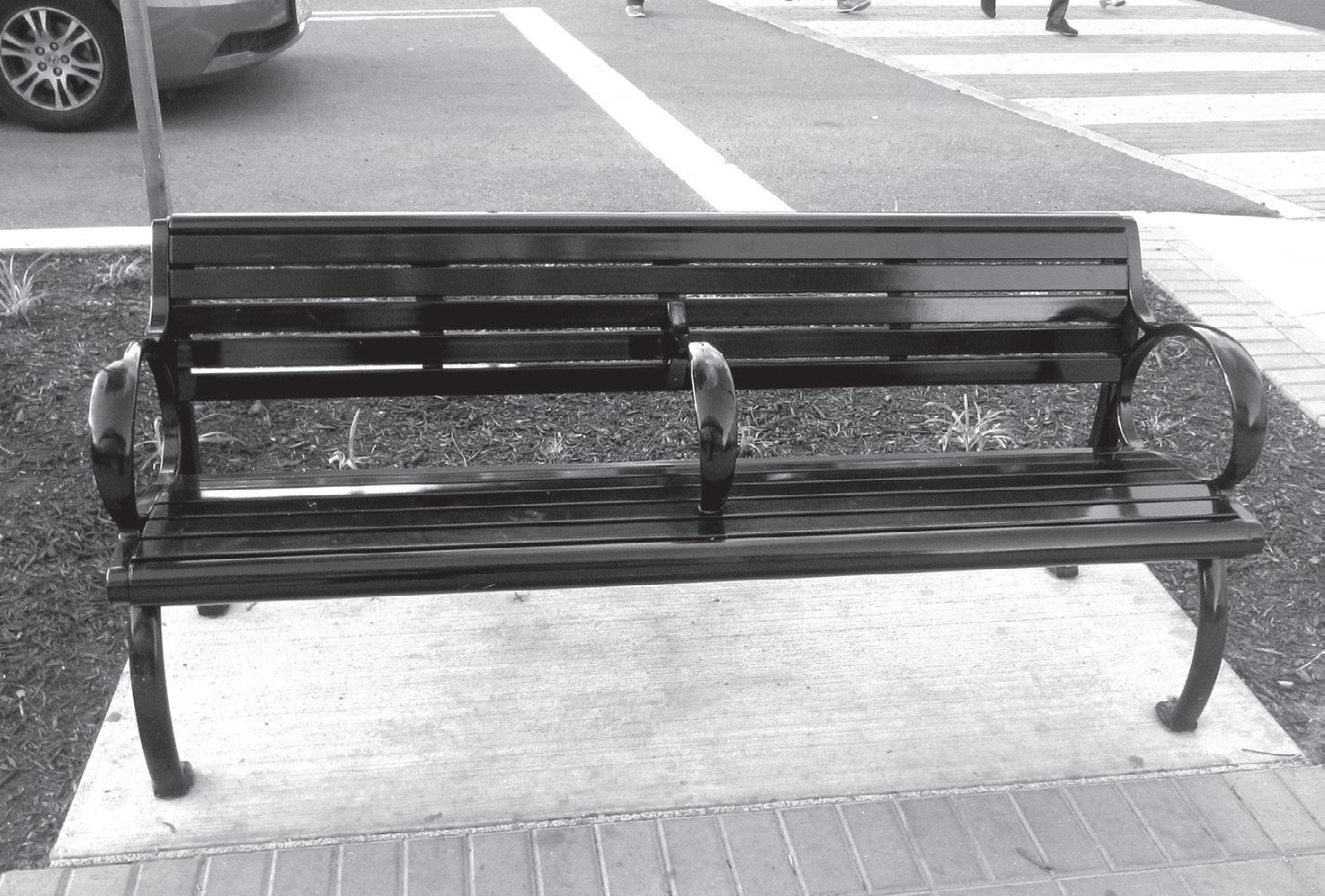
Anti-homeless policy has been a staple in cities all over the world for decades, whether those policies be forthright, like loitering laws and sit-lie ordinances, or peppered into a city’s infrastructure and public spaces. Hostile architecture, sometimes called “defensive architecture,” a trend in urban design which discourages the use of spaces in any way other than the intention of the owner or designer, has existed all over the world in various ways, but the most harmful examples have come in the way of targeting the homeless community, an already marginalized group, many of whom look for a place to sleep or rest during the day. They are met with a lack of access to public space.
Specific and egregious examples of hostile architecture and defensive design are prevalent and visible in major American cities. New York City’s long-famed Strand Bookstore installed sprinklers as part of their iconic awning, spraying people seeking shelter and sleeping under it. In early 2018, a homeless camp full of men, women, and children was cleared out by police action, only to be replaced by a set of 18 bicycle racks in an area where people do not frequently ride bicycles. A 7-Eleven store in Portland made headlines recently when it blared a high-pitch sound similar to an alarm outside the store to, according to the clerk, “keep homeless people away.” (The store was subsequently informed that this may be in contravention of city code.)
Tony Bernal, Senior Director of Public Policy and Funding for Transition Projects, a homeless organization in Portland which works to transition people out of homelessness and into housing, said of the design in their city: “The emergence of hostile architecture has compounded the moral crisis of our housing shortage. Too often we are leaving people experiencing homelessness with no place — indoors or outdoors — to rest or to be safe.”
People facing homelessness in many cities throughout the United States often feel safer spending a night in open public space than they do in shelters, but design policy forces people to reevaluate where they will spend the night. Daytime services as well are not always easily accessible for everyone facing homelessness in these cities, and yet, cities continue to take away access to areas where those experiencing homelessness seek refuge throughout all hours of the day.
California, a state which is home to over 12 percent of the population of the United States, is a particularly nasty offender in the game of hostile architecture, and it is an offense felt by the people who experience homelessness all over the state. In San Francisco, benches were removed in the middle of the night from Civic Central Plaza in the 1990s as well as United Nations Plaza in 2001, leaving nowhere to sit during the day for many of the plazas’ daily visitors and nowhere to sleep at night for those seeking refuge in a formerly accessible space.
San Francisco also implemented the use of
"pee-proof" paint, UV-treated paint which forces urine to bounce back on the person urinating, in several places in the city. It is designed to discourage public urination, which can be, in some cases, the only option for some who experience homelessness. In other cases, “decorative” rocks have been added to areas where some might congregate to drive them away. Sacramento, the state capital, faces its own troubles with defensive architecture, and many seem to believe that these design choices affect all members of the public, not just homeless people.
“Our downtown has incorporated hostile designs and practices, such as removing benches outside the library, erecting fencing to keep people out of alcoves, turning off all the water faucets, turning on sprinklers odd hours at parks, just some examples, all to discourage homeless people and loitering,” said Paula Lomazzi, the director of Sacramento’s street paper Homeward Street Journal. “What they have done affects everyone, making downtown uncomfortable for everyone, including shoppers.”
Philadelphia’s Love Park, located in the heart of the city, underwent a rather long, $26 million renovation, unveiled in 2018 and claiming to be designed as “more accessible and inclusive”. The question then became: Who can access and be included? The new benches installed in the beloved attraction are curved and slotted, metal bars dividing them into sections. While there has been a public outcry against some of the redesign, as it looks to the eye to be designed for keeping homeless people out of the public eye, the city remains steadfast in its support for what it believes is a more inclusive design.
“When Love Park underwent its redesign, there was a focus on making it more accessible and inclusive for all Philadelphians. By removing the barrier walls and uneven terrain that once defined the park, the Department of Parks &
Recreation was able to create a smooth, welcoming area that could better accommodate people with disabilities, families with small children, and others,” city spokesperson Kelly Cofrancisco said when asked about the backlash. “The new benches reflect the standard design for seating installed across the city’s park system, with dividers that are supposed to encourage people to share the space and allow multiple people to sit on the benches.”
The rest of the city, known to all as ‘The City of Brotherly Love,’ also houses spikes on the walls at Eight Penn Center, a famous curved “bench” in Eighth Street Station, and the world’s most controversial Starbucks — after last year causing worldwide controversy when two black men were arrested for sitting for too long, seating sections were removed due to a number of homeless people spending time in the cafe during the day.
“Really, the bigger issue is why people are sleeping in parks in the first place and what we as a community are doing to address that,” Cofrancisco stated. “We should be asking that question of American society, too, more than anything else. Here in Philadelphia, we’re proud to say that there isn’t an ‘us versus them’ mentality. Instead, we work together to ensure that people experiencing homelessness receive access to services as well as dignity and respect and that residents, workers, businesspeople, and visitors can enjoy Philadelphia as one of the best, most welcoming cities in the nation.”
While the city of Philadelphia and many others in the United States might be looking towards bridging the gap between the homeless community and the services that may assist them, day and night, this does not address what goes on in public, shared spaces.
“I think [hostile architecture] sends the message that people who sleep outside are not part of the community, are not our neighbors, and that
it is alright to ostracize them,” The Contributor executive director Cathy Jennings said. “This type of attitude hurts any community.”
In the hands of so many cities right now is a question: Who is welcome in public space? When the city builds an armrest in the middle of a park bench, it says to someone who needed to sleep there, “You are not welcome here,” When the city adds spikes to the cement of an already hard and uncomfortable sidewalk that once laid flat, it says to the person who needed to sit there, “You are not welcome here.” It makes the message rather clear. It does not need words on a sign, only metal and concrete instead.
To call much of this design work “defensive” architecture rather than “hostile” is inherently hostile in nature. The word implies that the public needs defending from the sights and experiences of homelessness when they walk along the sidewalk or through a park for lunch, or walk home at night past someone sleeping under a store’s awning to get away from the rain. It implies that public space needs to be defended from the presence of other members of the public. They just might not be the “public” that a city wants on display.
There are instances in which public organizing against this type of design has been successful. When anti-homeless spikes were installed in Montréal, the outcry was so loud that the city removed them almost instantly, reopening that sidewalk space to whoever may need it. In Iowa City, local organizers rallied around a call for the removal of benches with armrests in the center, allowing for several to be replaced with benches without armrests; benches where someone, who might need to, can lie down and sleep.
These changes in design remain in place because those who think themselves unaffected tend to not notice these things, which would explain recent social media campaigns to call out hostile architecture, like the one launched by UK artist Stuart Semple, as well as projects like that of artist Sarah Ross, creator of a padded garment called the Archsuit, which is designed to make it easier to lie down or sit in places where it has been made nearly impossible, drawing attention to this type of architecture. In the midst of all this, people facing homelessness are sent out of sight, maybe as a means to keep them out of the minds of a city’s residents and subsequent tourists, people who use those public spaces for leisure rather than out of necessity.
There are people who need this public space more than its audience desires it. More than someone needs a space on a divided bench to take their lunch break; there is someone who needs a place to spend their day, as other options for homeless people are limited during the daytime hours. Instead, those people are made to feel excluded, like they are not members of the deserving public at all.
Courtesy of INSP.ngoDuring the 1850s, Saint Cloud Hill was a well-known promontory one mile south of the city of Nashville. Its beautifully wooded slopes just east of the Franklin Turnpike served as a picnic area for the townsfolk. The atmosphere of peace and quiet changed dramatically in 1862 following the February surrender of Nashville to Union forces. Federal Captain James St. Clair Morton, U.S. Corps of Engineers, soon began to fortify Nashville. His plan was to build three large forts on the hills south of the city. Fort Morton, named for himself, was to be built on the hill just north of the city reservoir.
Fort Houston was to be built close to the intersection of today’s Demonbreun and Division Streets. The third fort was to be built on Saint Cloud Hill. Forts Morton and Houston, expected to be large, permanent works, were never completed because Federal authorities were unable to find enough African-Americans to build all three forts. A block house, called Blockhouse Casino, was built on Kirkpatrick Hill, the site of today’s Eighth Avenue Reservoir.
The Union strategy was to demand that all large slaveowners furnish slaves to do the work.
Elizabeth McGavock Harding, at Belle Meade, whose husband, William Giles, was a political prisoner at Fort Mackinac, Mich., heard a rumor on about July 26, 1862 that Federal General William “Bull” Nelson “intends calling on the people of Davidson County to furnish 1,000 negroes to work on fortifications here, and the newspaper, called The Union ,” edited by a man named Mercer, from Kentucky, advocates it strongly.” Elizabeth expected every day to be called on “for negroes to work on the fortifications.” The call came on Monday, August 11, 1862, when Mrs. Harding received an order “for 20 stout, able-bod-
ied negro men, each one to be provided with axe, spade and shovel, and daily rations to be provided by their owners.”
A day or so later, a number of Federals came out to Belle Meade and demanded 12 able-bodied men, duly furnishd with implements, provisions, etc., to work on the fortifications. They told the slaves that, “if any negro voluntarily offers his services, when the work is done, he or they will be entitled to their freedom.” Twelve agreed to go and seven more slaves were rounded up down the road at Cousin Frank McGavick’s plantation. David McGavock at Two Rivers lost “five or six to the ranks of the enemy.”
With only limited success at the county’s large plantations, the Federals put cavalrymen outside three black churches and grabbed young black men as they came out. Nearly 2,000 black men, both free and slave, were forced or agreed to go into service. They cleared Saint Cloud Hill of trees to open up lines of fire, blasted the solid rock and dug underground magazines. Expert slave stonemasons shaped the stone and laid thick masonry walls. Black women washed clothes, cooked food and hauled away debris in wheelbarrows. Captain Morton said, “To the credit of the colored population be it said, they worked manfully and cheerfully, with hardly an exception, and yet lay out upon the works at night under heavy guard, without blankets and eating only army rations.”
Fort Negley, named for U.S. General James Scott Negley, who was, in 1862, commander of Federal forces in Nashville. The fort was constructed in only three months, being completed on December 7, 1862. It became the largest Union fort west of Washington, D.C., covering four acres. The
polygonal-shaped structure measured approximately 600 by 300 feet. On May 15, 1865, Brig. Gen. Z. B. Tower submitted an inspection report to Maj. Gen. George H. Thomas. He wrote, “It is a very imposing fort and its appearance alone would keep an enemy at a good distance.” The Confederates never attacked, however, it is likely that the opening guns of the Battle of Nashville were fired from the fort.
The Union army abandoned Fort Negley after 1867, but the fort did not remain vacant. The Klu Klux Klan held secret meetings in its blockhouse until 1869 when former Confederate General Nathan B, Forrest, head of the Klan, led Nashville Den Klan members to the fort where they burned their robes and officially disbanded.

The next activity came in 1887 and 1888 when some of the stones at Fort Negley were taken to build the Eighth Avenue South Reservoir, which was completed on the former site of Blockhouse Casino on August 24, 1889.
Again, Fort Negley was ignored until 1936 and 1937 when the Works Progress Administration (WPA) restored the fort. Abandoned again, it fell into ruins. Finally, in 1998, Michael Emrick, a historical architect, called Fort Negley an “absolute phenomenal resource” to generate tourism in the city. In 2002, the city responded by allocating one million dollars to totally rebuild the fort. This was eventually done and, several years ago, most of the trees on the slopes of the fort were removed. Although this received some criticism, I agreed with the decision as the fort looks today more like it did in 1862 when the trees were cleared to provide lines of fire.
See our review on Pg. 12 of the documentary Saint Cloud Hill
Michelle Obama spent Mother’s Day with a sold out crowd at the Ryman Auditorium on May 12. Her stop at the Mother Church was the last of a 34-city book tour for her memoir Becoming , which has sold more than 10 million copies since it was released in November of last year.
The former first lady was in discussion with The Late Show host Stephen Colbert, who also moderated her London tour stop.

She walked the audience through her early life in the South Side of Chicago — her family was black and working class. And she discussed what it was like to work alongside Barack Obama on his way to the White House, as well as what it was like to live in the home.
Michelle Obama’s mother and her two daughters flew into Nashville to join her for Mother’s Day, and the audience was full of local celebrities like Alice Randall and her daughter Caroline Randall Williams and politicians like Mayor David Briley and District 19 Councilmember Freddie O’Connell.

The night was focused on what we are “becoming,” as people and as a nation. Obama seemed hopeful, telling the audience that often the people she meets are nothing like what television news would have her believe.
“I’ve just had to stop watching,” she said, adding that she gets her news from print media rather than broadcast networks. She took a few jabs at the current president — of course without saying his name, mentioning President Donald Trump’s role in spreading the rumor that her husband wasn’t born in the United States.
“I just wanted to tell some people this isn’t a joke and when you make stuff up and you
know you’re making stuff up … it can cost my children their life,” Obama told the audience.
At the beginning of the program, Nashville women took the the stage to tell the audience who they were becoming. One was the
mother of a child with special needs, another was Trisha Yearwood, another CeCe Winans.
Though folks in the crowd chanted president with Colbert asked Obama what she was planning post book tour, she reiterated what she had writ-
ten in the memoir, which is that she thought political dynasties were unhealthy for a democracy.
“We can’t afford to be cynical,” she said. “We have a chance to change things and I’m waiting to see what we do, but I remain hopeful.”

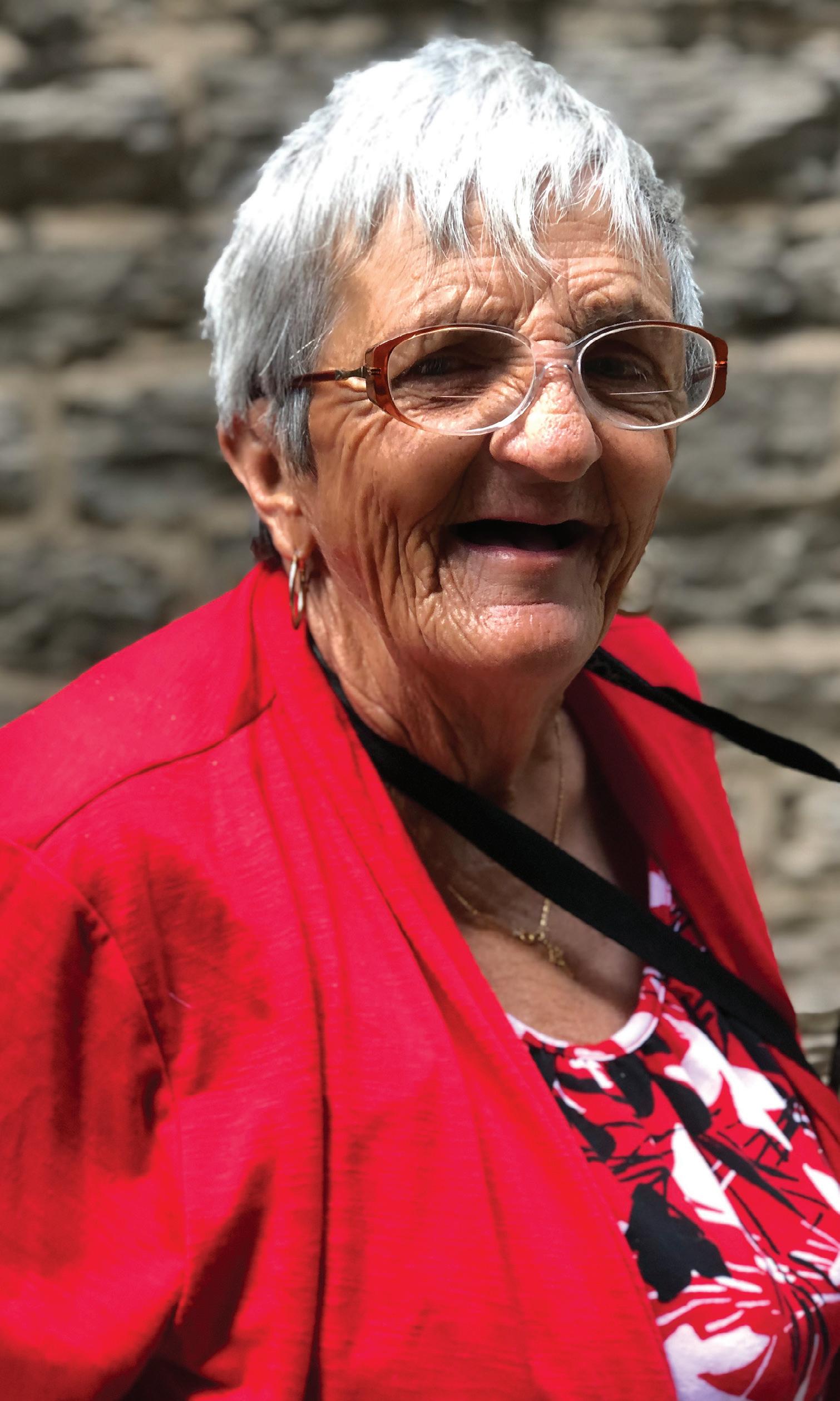 BY LINDA BAILEY
BY LINDA BAILEY
What do you want to talk about today?
I would like to talk about being a vendor.
What’s it like being a vendor?
Being a vendor has helped me find my way. Because some people don’t know what it’s like to be homeless. Some people like to make fun of people who are homeless, but how can you speak if you haven’t been there, ya know? Nobody should judge nobody. That’s not our right. But, The Contributor gave me a business. It helped me be stronger. It’s helped me in many ways.
In what ways has it made you stronger?
It’s made me be kinder. It helps me to keep on smiling. Without the other vendors, it wouldn’t have happened. Watching people support you makes you stronger.
Where do you sell?
On Thompson Lane and Murfreesboro Road. I’ve been in that area 30 years so everybody knows me. I have a lot of customers who speak Spanish. I know a little Spanish, but not much, but I try for them. I love my customers because they love me!
What were you doing before you started selling?
I was babysitting and people didn’t want to pay, so I found my way to The Contributor office. I’d never been downtown. But ever since I’ve been selling the papers it’s helped me. Yes, the money helps, but I feel more independent. I don’t have to worry. I mean, yes, we all worry, but without the vendors showing me how to get out there and be stronger, I’d probably still be homeless.
You know, I wish in my heart, every time I see someone who is homeless, I have a very hard time dealing with it. Because I know what it’s like. I was homeless for five years back a long time ago, but I don’t want to go back that way again. We all have to help ourselves. There’s nobody out there that owes you anything in life. You’ve got to help yourself before anyone else can help you.
I feel like that’s a beautiful thing about The Contributor. It allows you to provide for yourself, but also creates a community of vendors and customers that are helping each other.
Yeah. You know being a vendor for the last three years has made me stronger, has made me show that I’m number
one now. I’ve never felt that way before. I never felt down on myself, but I also felt like poor pitiful me, somebody feel sorry for me and now I can hold my head up high and start smiling. You know, you got to care about yourself before you can feel good about yourself.
POR LINDA BAILEYDe que le gustaría hablar hoy? Me gustaría hablar de lo que significa ser un vendedor
Que signific ser un vendedor? Ser un vendedor me ayudó a encontrar mi camino. Porque muchas personas no
saben lo que ser una persona sin vivienda. A muchos les gusta burlarse de los que no tienen casa, pero como puedes hablar del tema si nunca has pasado por esto, me entiendes? Nadie debería de juzgar a nadie. No tenemos el derecho. Pero el contributor me dio un negocio. Me ayudó a ser más fuerte y me ha ayudado en muchas maneras.
En que maneras sientes que te has hecho más fuerte?
Me ha hecho una persona más amable. Me ayuda a sonreír. Sin los otros vendedores eso no sería posible. Cuando la gente te apoya te haces más fuerte.
Entre la Thompson Lane y la Murfreesboro Rd. He vivido en esa área por 30 años así que todos me conocen. Conozco a muchos que hablan en español. Yo hablo un poquito de español pero no mucho pero trato por ellos. Amo a los consumidores porque ellos me aman a mi.
Cuidaba niños pero la gente no quería pagar.Asi que encontré el Contributor. Nunca había ido al centro de la ciudad pero vender periódicos me ha ayudado mucho. Claro que el dinero ayuda pero me siento más independiente. No me tengo que preocupar, claro todos nos preocupamos pero sin la ayuda de los otros vendedores probablemente todavía sería una persona sin casa. Sabes deseo en mi corazón cada vez que veo una persona sin hogar me cuesta mucho aceptarlo. Porque yo se lo que se siente. Yo viví sin hogar por 5 años hace mucho tiempo y no quiero volver a vivir eso.Todos tenemos que ayudarnos los unos a los otros. Nadie te debe nada.Tienes que ayudarte antes de que otros te ayuden.
Siento que eso es lo más hermoso de él Contributor,No solo te permite a proveer por ti mismo pero también cres una comunidad de vendedores y clientes que se ayudan el uno al otro.
Si, ser vendedor me ha ayudad a ser más ffuerte.Me ayuda a entender que yo soy el número uno.Nunca me había sentido así antes. Nunca me he hecho sentir menos pero si me sentía como un pobre con lástima alguien se sintió mal por mi y ahora levanto la cabeza y comienzo a sonreír.Sabes, tienes que cuidarte a ti mismo antes de sentirte bien de ti mismo.
The annual count of people experiencing homelessness — called the PIT (Point-in-Time) Count — was released on May 8 by the Metropolitan Development and Housing Agency. And while the number of people experiencing decreased by 14 percent from 2018, MDHA, the Homeless Impact Division and advocates alike all say the overall number is not totally representative of homelessness in Nashville.
MDHA says the PIT Count, while an important metric, “should be considered as one among a variety of sources of data needed to tell the whole story of homelessness,” according to a release.
“A decrease of this size is something to be proud of,” Mayor David Briley said in the release. “The Homelessness Planning Council and service providers across our community are clearly moving the needle on ending homelessness. While this is a promising trend, we know there is more we can do to make sure everyone in Nashville has access to housing.”
Lindsey Krinks with the nonprofit Open Table Nashville says that the annual count has never been accurate.
“While MDHA’s final PIT Count number only found 1,986 people experiencing homelessness, we estimate that approximately 20,000 people are un-housed in Nashville,” Krinks says. “[That] number [is] high enough to completely fill Bridgestone Arena.”
The PIT Count typically happens on one of the coldest nights of the year. On January 22 and 23, more than 100 volunteers from 23 agencies and universities canvassed to find people experiencing homelessness throughout the city. The temperature was around 35 degrees that night, according to MDHA. Because of how the federal government defines homelessness, people counted on that night only include those found in shelters, transitional housing facilities, outside, in a vehicle or in abandoned buildings. (People staying at Room In The Inn and the Nashville Rescue Mission are counted.)
Because the count relies on the definition used for the U.S. Department of Housing and Urban Development, many go uncounted. For example, as MDHA points out in its release, including the definitely from the U.S. Department of Education would all for a more broad definition of homelessness that would count people living in motels or children in families who are doubled up and crammed into a home because of eviction or another housing loss.
Vicky Batcher, a vendor for The Contributor, lives in her RV. She was concerned that she was among the uncounted that evening. Batcher often parks her RV in places on the edge of town, and feels that people who are not in the core of the city are not being counted — particularly since rising costs are causing many to be pushed away from the downtown area.

“While the PIT count is important, it makes me wonder how many weren't counted,” Batcher says. “I wasn't.”
Krinks and other advocates know many people personally who are not included in the count.
“We see new faces on the streets every week and know the names and stories of the people living without stable housing in Nashville who aren’t included in the count,” Krinks says. “We know the disabled couple who is couch surfing because they were evicted when a developer flipped their apartment. We know the mother and children living in a $250-a-week bug-infested motel while they wait on subsidized housing. We know the man who is in the ICU for a traumatic brain injury. We know the man who is in jail because he was arrested for trespassing for sleeping on private property. None of these people are included in MDHA’s PIT Count.”
The decrease could also present a problem in funding.
“In order to access its Continuum of Care homeless funding, the U.S. Department of Housing and Urban Development (HUD) requires that communities across the country conduct an annual Point-In-Time count of persons experiencing homelessness that are unsheltered, as well as sleeping in emergency shelter or transitional housing, on a single night during the last 10 days of January,” the MDHA release says. “The count numbers will be reported to HUD in late April.”
People who are sleeping outside, in a vehicle or an abandoned building
All of the above, plus people sleeping in emergency shelter.
All of the above, plus people sleeping in transitional housing for homeless people
All of the above, plus people who are doubled up or couch surfing due to the loss of housing or economic hardship, living in motels, or in institutiaons such as jails or hospitals and homeless prior to entry/admission
Pyramid adapted from 2011 Point-in-Time Count of Homelessness in Portland/Multnomah County, Oregon, Kristina Smock Consulting, June 2011. All charts courtesy of MDHA
It’s yet to be seen exactly how that will impact funding for the CoC, but it will undoubtedly result in some loss of money for homelessness in the city.
“We are working hard to improve the functionality of our community’s Homeless Management Information System, and we are asking for additional resources to do that,” said Judith Tackett, director of the Homeless Impact Division of Metro Social Services. “Not only will an effective HMIS allow us to produce and evaluate annual data but it will also improve the efficiency in which people can access services in our community.”
MDHA says they’ll continue to use various data points to look at homelessness in Nashville.

“To that end, an annualized count that accounts for all types of homelessness over the course of a year will be invaluable to painting a more complete picture of the state of homelessness in Nashville-Davidson County,” MDHA says.

Krinks says she believes “that homelessness will continue to grow in hidden and obvious ways in the Nashville area and beyond until we adequately address our affordable housing crisis,” but adds that she’s proud of the ways “homeless service providers, the Metro Homeless Impact Division, and others are working together to connect struggling individuals and families with housing in one of the tightest housing markets in the country.”
• Volunteer with a community partner who serves people experiencing homelessness. To find information about homeless services providers, please visit www.wttin.org.
• Donate items such as water, sunscreens, new underwear, socks, non-perishable food items, to help people experiencing homelessness. There is a great need for water during summer months. Contact the Metro outreach team by emailing troy. jenkins@nashville.gov or sally.besuden@nashville.gov to find out where to drop off donations.
• Consider a financial contribution to pay for move-in costs including first month rent, security and utility deposits. How’s Nashville assists people with up to $1,000 in move-in costs per household and there is an urgent need to replenish the community’s fund. Donations are tax-deductible. For more information, email judith.tackett@nashville.gov.
• MDHA needs landlords willing to accept Section 8 Vouchers. This program provides low-income individuals and families an opportunity to find affordable housing in the private market. Currently, there are 841 landlords who accept the more than 7,000 vouchers administered by MDHA, but the number of such landlords has been declining. If you are a landlord and would like more information about the program, please email section8@nashville-mdha. org. Join a listserv of more than 450 interested agencies and individuals who want to end homelessness by emailing stolmie@nashville-mdha.org.
• Attend a meeting of the Nashville Coalition for the Homeless & the Continuum of Care, from 9 to 11 a.m. on the third Thursday of each month at the Nashville Rescue Mission.
Info courtesy of MDHA
In the spring of 2016, Nashville’s Saint Cloud Hill was home to more than 20 of our homeless neighbors who’d installed an ambitious warren of tents, decks, rain tarps and fire pits at the site. Organized by their charismatic “Captain” — a prolific singer-songwriter named Chris Scott — those men and women created a working communal living space, but more importantly, they created a community. The Saint Cloud Hill tent city became a place where drug addicts got clean and the anxious energies that come with a life on the street found direction and purpose — there was always a deck to build, wood to chop or a trail to clear and mulch on the hill.
Saint Cloud Hill has always beckoned to outsiders — slaves seeking to escape a life in bondage created a camp on the hill near Fort Negley during the Civil War. And this latest chapter of the place has been documented in Sean Clark and Jace Freeman’s new film, Saint Cloud Hill The film touches on city management, policing practices, development and gentrification, homelessness and affordable housing. But it also almost stubbornly avoids getting caught up in too many details. Instead Saint Cloud Hill is an impressionistic and poetic film that’s full of emotions and sensations not statistics and chattering experts.
The film’s immersive cinematography makes the experience of life on Saint Cloud Hill immediate and sensual. We walk in Scott’s footsteps as he hauls wooden shipping pallets back to
camp one at a time — they’re stripped for raw building materials and transformed into decks and steps. We sit around a fire with the hill’s residents as they eat bread, and drink coffee, and stare into the flames. We spend a sunny afternoon lounging in outdoor furniture listening to A Prairie Home Companion on a battery
operated jam box radio. We’re awakened in the middle of the night by glare of police flashlights.
Watching this film we get to know life on Saint Cloud Hill, but we also get to know a lot about the homeless people who created that community. This movie is packed with scenes of physical labor dispelling clichés about lazy living on the streets — Captain Chris and his crew are nothing if not creative and industrious. We find out about the catastrophic health crisis and previous incarcerations that can precipitate a spiral into homelessness. We see how basic activities like bathing and cooking can be hacked for a life in an urban woods. We also learn about the vulnerability of lives caught between poverty and progress.
Captain Chris is quick-witted and kindhearted, but also frustrated and exhausted as the camp struggles to survive against the city forces that own the public land the camp is on, and pressure from developers who have their own designs — literally — for the hill. If this movie has a star, it’s Scott. His bright-eyed enthusiasm and infectious laughter make him the empathetic protagonist this movie needs. Scott’s
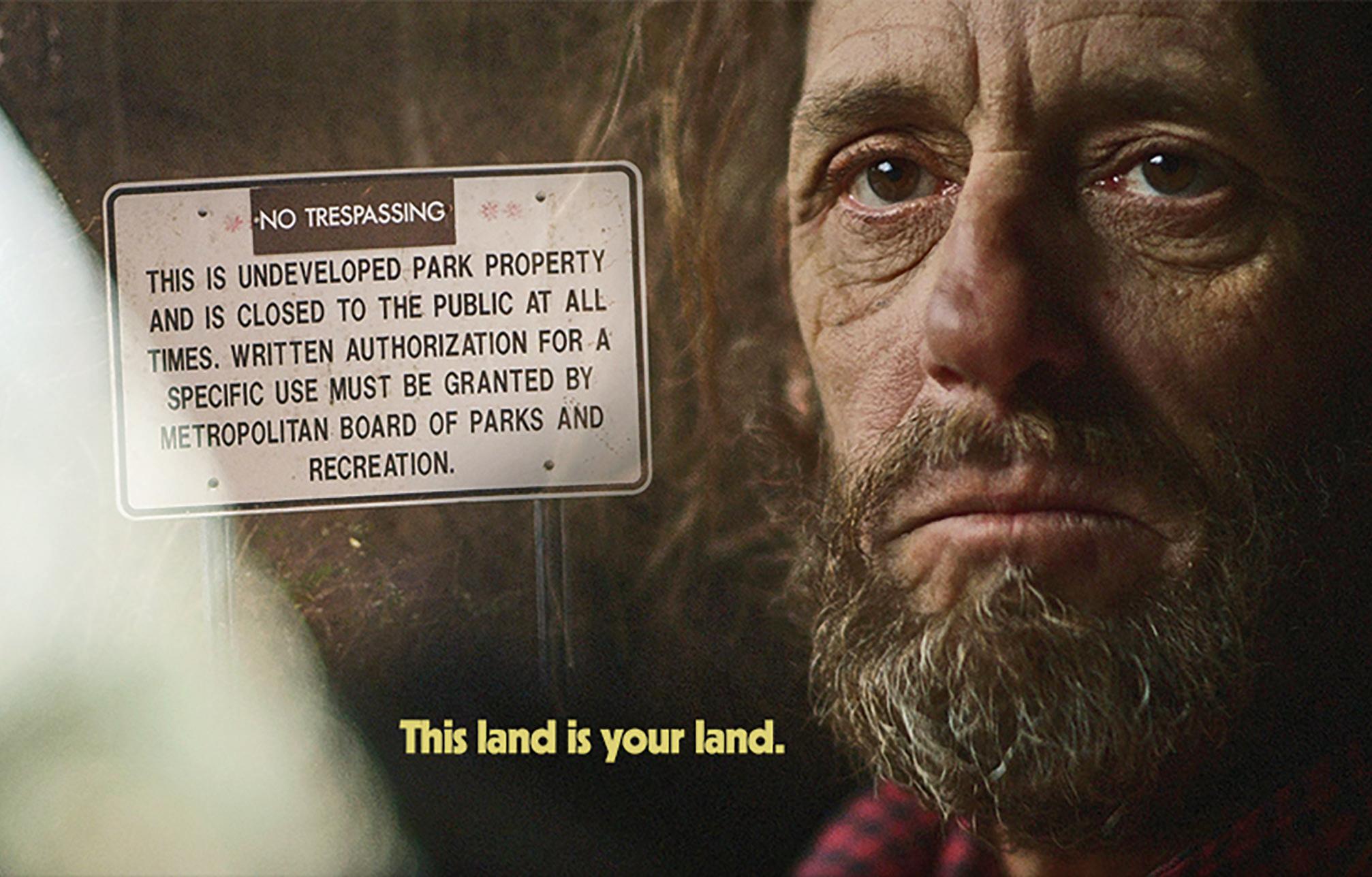
eloquence and commitment to this community make him a natural leader, and a perfect spokesman for the people who lived in community at Saint Cloud Hill before the city dismantled the camp and bulldozed the entire natural area.
One day we might get a Saint Cloud Hill movie that illuminates its history as a shelter for vulnerable populations, and that does a detailed investigation of the roles the city, developers, and the police all played in the razing of what was Nashville’s largest tent city. This is not that film. This subject deserves deep documentary journalism, but Saint Cloud Hill is ultimately more artistically ambitious than that. Instead of giving us stats and bureaucrats this film is offers an emotional and moving portrait of a place and the people who called it home.
Saint Cloud Hill premiers at the Belcourt at 7 p.m. on May 28.

Joe Nolan is a critic, columnist and performing singer/ songwriter based in East Nashville. Find out more about his projects at www.joenolan.com.

In public schools across America, more than 1.3 million students have been identified as homeless.
Students experiencing homelessness are 87 percent more likely to drop out of high school, according to Education Leads Home, a national campaign working to break the cycles of poverty and homelessness in the United States.

Within Metro Nashville Public Schools alone, there are an estimated 3,400 students experiencing homelessness.
Under the McKinney–Vento Homeless Assistance Act, homelessness is defined as a lack of a fixed, regular, and adequate nighttime residence. That could mean students living in shelters, cars, public spaces, substandard housing or with other families due to the lack of alternative accommodations or students who live a migratory lifestyle.
It’s those students that people like Alison McArthur and Catherine Knowles hope to serve through their work.
Seven years ago, McArthur began working with colleagues to design an initiative called Community Achieves. Now, she serves as Community Achieves Coordinator and says the program currently has a site coordinator at each of its 22 partner schools.
MacArthur says it was her hope that the program would serve as a means of identifying and providing supports around areas of challenge for MNPS students and families through internal programs and community partnerships.
That might look like food insecurity, lack of school clothing or inadequate healthcare, and in some schools, there might be a need for parental empowerment. Community Achieves provides supports for parents and the wider community too by offering GED and ESL courses.
“It varies across the board and schools, and the supports will look different in each community. The schools coordinate lots of events for families so they can come to school and learn about ways to advocate for their students, and then, there are just basic needs for the families, like food boxes, clothing, diapers, hygiene items,” she says.
In some schools — like Two Rivers Middle Prep and Donelson Middle School— the need for food assistance overwhelms.
Twenty-eight of the 427 students at Two Rivers Middle Prep are experiencing homelessness, and nearly 90 percent of the student body is classified as economically disadvantaged. Operated on campus is an in-school food pantry, which serves as a food distribution point for low-income members of the community
during the school year and summer months.
McArthur says, however, that the need for food and homelessness do not always go hand-in-hand.
“The needs vary across the board and in the different schools. It really is about knowing the families and listening to know how we can best help them,” she says. “Before schools look for partners, they should identify the needs and get students and parent voices. If those aren’t available, we will work with external partners, and HERO is a good example of that.”
HERO is a program guided by federal law that is dedicated to providing students identified as homeless with the support and tools necessary to succeed in school.
Catherine Knowles, MNPS Homeless Liaison, has worked to serve more than 3,400 students who are experiencing homelessness this year alone.
With the growth Nashville is experiencing, Knowles said she has worked with families who have been displaced by the increase in living expenses and the lack of affordable housing. Because of that, she says one of the primary goals of HERO is providing students with transportation.
“We have even had a number of families who have had to leave Davidson County, and because of that, we work with adjacent counties to cover the overlap between students who come and go. We may have a student who has become homeless in Davidson County, and it’s our job to make sure they are allowed to remain in their school even if they have to move. We work together to provide for the needs of students, and it ends up being nearly 1000 students in a school year,” Knowles says.
To benefit from the HERO program, a student must be deemed eligible. But MacArthur said they can often run into problems just identifying all eligible students.
“Sometimes there are families that won’t apply because they are afraid that if they admit to being homeless, that maybe someone would take their kids from them. That’s not the case,” MacArthur says. “
Despite the perceived risk, Knowles said within the first six weeks of school, she will have a roster of about 1,000 students in need of support.
“A lot of folks look at homelessness so narrowly, but a lot of times, the challenges are very similar to people face experiencing poverty — that constant need for assistance with things that might generally be outside a family’s financial reach,” Knowles says. “We fully recognize that every circumstance is unique. [We just want to] know what our families’ needs are … so we can work together to provide for those needs.”
WE’RE HONORED TO SUPPORT THE CONTRIBUTOR AND TO CHAMPION GOOD NEWS IN NASHVILLE.
In Metro Schools, more than 3,000 students are experiencing homelessness. A program called Community Achieves is working to provide them support.
All year long we've been on the go kind of quick steppin' none of us were slow
time to go to work you would always shout oh yeah you said it's almost summer almost... school is out
BY DAVID "CLINECASSO" C ,FORMERLY HOMELESS VENDORFrom within the cavern, the cave that is ours alone you have become my candle my Flame my inferno immensely an endlessly guiding as you glow, we are of one flesh one entity One Flame a wildfire that is us will send you away any obstacle placed in our way
DERRICK W.
the world is a beautiful place where the flowers are growing where the fresh air is a place of paradise the earth is a wonderful place to grow life or smell the flowers the earth is a great place of the great hope
 BY JUNE P., FORMERLY HOMELESS VENDOR
BY JUNE P., FORMERLY HOMELESS VENDOR

About a year ago I was selling The Contributor in Bellevue at the corner of Hicks Rd. and Old Harding Pike. I work at a four way stop sign, and I try to wave at everyone that passes by. I guess it was around 3 p.m. or so when I turned to wave at the cars coming down Hicks Road and I saw something lying in the road. I walked over to see what it was and to my surprise it was an iPhone. Amazingly there was not a crack in the screen. The first thing that hit my head was it’s probably locked. Boy, was I wrong! So I opened the phone and called the last number called on the phone. The lady that answered was the sister of the phone’s owner. (At that time I didn’t realize that it was one of my customers whose daughter I adore!) I told her who I was and where I’d found the phone. She called her sister’s husband’s phone to see where they were and to let them know someone had found their phone. The couple was having dinner at a local Mexican restaurant close to where I was, so I told the sister I’d take the phone to them. I had no idea what the couple even looked like, however, they knew who I was. When I walked in they waved me over to the table. The couple was happy that I had found the phone. The wife said, “Mary, I wasn’t ever even aware I had lost my phone. Thank you so much for returning it to me.”
I said, “You are so welcome. I’m just glad it didn’t get ran over! I know if I had lost my phone I would hope that they
would return my phone to me as well.”
They offered to buy me something to eat, but I said no because I wasn’t hungry but told them thank you anyways. I did appreciate the offer. She tried to offer me some money, but I told her she didn’t have to do that either. I was just returning something that belonged to her. She kept insisting I take some money, so I did finally, but really I was just only doing what anyone should do if they find someone’s phone. It’s called doing the right thing.
One afternoon in March I realized my wallet was missing with everything in it - I.D., S.S. card, bus pass and money I made that morning.
I knew I had my wallet when I got on the bus downtown at 2:35 p.m. headed toward Bellevue. I got to Bellevue about 3:10 p.m. or maybe a little later. You see I went downtown to buy more papers to sell that afternoon. I got off the bus there in front of Victor’s Taco Shop.
OMG. I was flipping out. I turned my backpack inside out looking for my wallet. I went through my bag several times. My friend Mike that was giving me a ride to the pharmacy, so I even searched his truck. Still nothing. Mike said call MTA so I did. They said my wallet had not been turned in. I told them which bus I’d been on and asked them to contact the driver for me, but the person on the phone told me I just had to wait until tomorrow to see if anyone turned it in. I ride way too many busses to know he was lying. I know for a fact that they can
contact any given bus driver at any given time.
So Mike, his daughter Randi and myself went back to Victor’s to retrace my steps. I walked into Victor’s to see if maybe I had lost it there. No. Sorry. Mike and Randi searched the grass leading from Victor’s down to the bus stop where I got off. Nothing. I walked over to where I was selling papers. Nothing. So we decided to chase down the bus drivers in the area. We found one bus, but it wasn’t the same bus I’d been on because this one had a female driver. From there I went to the Bellevue Road four way stop sign to wait on the bus that would be arriving soon. I knew the driver. It was Mr. Bill. I waved him down and told him the reason I had stopped him. Nothing.
The next morning when Mike picked me up to take me down to where I sell papers I called MTA to see if my wallet was turned in. No, nothing was turned in. I was so heartbroken.
That afternoon while I was working, I kept looking at the clock and looking at every bus driver that turned off of Highway 70 on to Hicks Road trying to spot the bus driver from the day before, but I wasn’t even sure if the bus driver would be on the same schedule. The bus I was on yesterday should be arriving between 3:15 p.m. and 3:30 p.m. give or take. Well, sure enough there it came off of 70 on to Hicks Road. Man, I was so hoping that was the driver from yesterday.
As I headed over to stop the bus I noticed the driver was taking off his gloves and reaching
behind him. Before I could even ask the driver about my wallet, out the window it came. I was so overwhelmed with joy. He’d found my wallet the day before and kept it, hoping when he came back out on his route that I would still be out there. Since he didn’t see me he took it home with him because he knew he’d see me the next day. If he had turned it in when he found it, it could have taken even longer for me to get my wallet back.
I told the driver how much I appreciated him for returning my wallet to me and asked him his name. “Chris,” he replied. That afternoon I got Mike to take me to the Dollar Tree so we could buy a thank you card. I just wanted to let the driver know how much I appreciated what he had done for me. When Chris came through that next day, I stopped him and gave him the thank you card. Once again I told him how much I appreciated him for returning my wallet and let him know that what he had done was above and beyond his job title. The crazy thing about this whole story was the same place I left my wallet on the bus was the same place that I found the cell phone! I know it sounds crazy, but it’s true!
I could have kept the cell phone and the driver could have kept my wallet. But we didn’t. We both did the right thing. I guess what I’m saying is if you do good things, good will come back to you and this proves it. Once again Chris, thank you for going above and beyond your job as an MTA driver.
When you look at people experiencing homelessness what do you think? Maybe they’re an alcoholic, an addict, a felon, a sex offender, or a criminal, right? Many myths follow all homeless people throughout their journey to find a home. It’s hard to overcome stigmas and it causes more obstacles making a hard journey that much harder.
People assume all homeless people are the same and have all the worst qualities. It’s simply not true and makes it harder for everyone without a home. We have to pay the price because they are making assumptions about someone they don’t even know. I think that’s one reason why I enjoy writing for The Contributor. It gives me and others a voice and helps educate the public. It lets them get to know us.
I had asked my homeless friends what assumptions, myths and stigmas they’ve had to overcome or are still overcoming. I was saddened by their responses. Wayne B. from Flint, Mich. said he was recently kicked out
of a Taco Bell by the manager who called him a “troublemaker” because “all homeless are troublemakers.” It seemed like he’d had trouble with someone who was experiencing homelessness, so he assumed all homeless people are trouble. Wayne frequented that Taco Bell to charge his phone, grab something cheap to eat, cool off in the summer and stay warm in the winter. But now that option is gone.
Another formerly homeless friend from Wilmington, Del. said, “People assumed I use drugs and alcohol. There just had to be some other reason that I was sick and couldn’t work.”
Alexander from Melbourne, Sydney said, “Because I suffer from PTSD I must be a danger to myself and others.”
Another friend from Los Angeles said, “People think I’m lazy and it’s my fault that I’m homeless.” Unless you go up and talk to every person experiencing homelessness, you really can’t assume anything, yet people do.
I remember living in a drug infested hotel
because no one would rent to us and hearing people say, “They want to live there. They like it.” These assumptions hurt and I had to work hard just to have people understand that we’re not all drunks and addicts. Not all homeless people are alcoholics and drug addicts just like all drug addicts and alcoholics are not homeless.
Assumptions from the public prevent us from being seen as human beings, voters, or real people who are simply without a home. We are real people with real feelings and when these stigmas come up it makes it harder to get where we need to be — in a home. I remember a former Contributor vendor telling me he went to apply for a job and the interviewer said, “I can’t hire you. You’re homeless.” Kind of a Catch-22 if you ask me. The interviewee asked, “How can I get a home if I don’t have a job?” The interviewer stated, “That’s not my problem.”
The Bay Area Rescue Mission last month posted a list called, “Eight Ways to Help the Homeless,” where the number one thing was to NOT give them money. “Too often well intended gifts are converted to drugs or alcohol.” This simply isn’t always true. Number six was to take precautions for your own safety saying some of the people living on the streets are criminals and fugitives running from the law. Seems like this mission was appearing to help the
homeless, but actually creating more myths and fears possibly to gain donations for themselves.
I’ve also heard people tell me if I didn’t smoke I could afford a place. We’ve been priced out of the market for three years now. Even if we spent $140 per month on cigarettes quitting smoking won’t be enough to afford a monthly rent in Nashville. Other stigmas that I’ve personally heard are that homeless people are dirty and smell. Many people riding the bus will make rude comments about homeless people sleeping on the bus. The comments hurt my feelings. I can only imagine what the person it’s being directed at feels. One person thinking they’re better than another. Is this not stirring the hate pot?
Treating people experiencing homelessness with love, compassion and kindness is free. It costs nothing yet some would rather treat with hatred and ignorance. If we could overcome the stigmas, the assumptions, and treat homeless people as everyday people instead of social outcasts, maybe agencies could start listening to people with lived experience and represent those voices on their panels, their committees, and yes even congress to bring direct solutions, real solutions, lasting solutions to this epidemic of homelessness. We could be the change that can change the world.
It’s politics as usual up on the hill. Elected officials have lost touch with regular astrological signs like yours. Cuts in government spending may even lead to an abbreviated Zodiac. If you want to remain a Taurus, write your legislators and let them know. Don’t let business as usual force you to out of the sign you were born with.
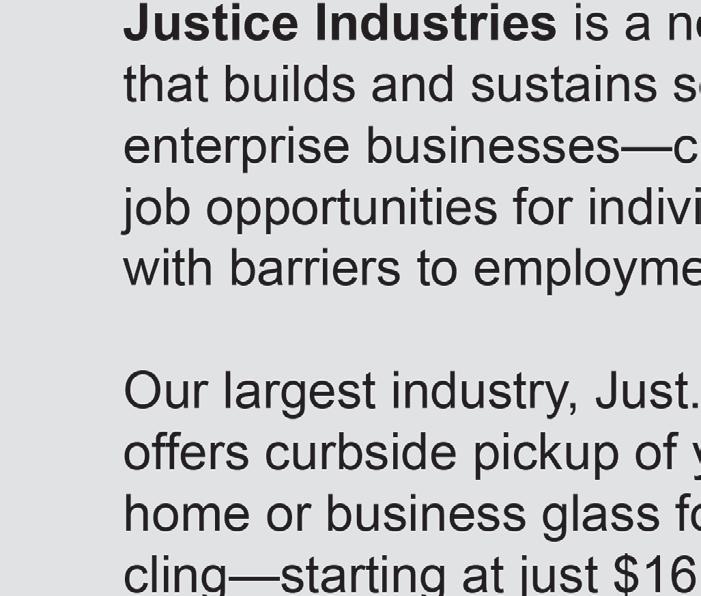

It’s cold outside, Gemini. I guess I won’t mind sitting alone on my sofa under a warm blanket watching famous people walk down the red carpet in sunny California. They sure look like they’ve got it together, don’t they? All those nominees and their plus-ones. For them, it’s about how they look. For you, Gemini, it’s about more than that. Sure, try to look good. But try to do good first.
I actually started writing this horoscope for you in early 2002. I wrote just a few words every year so you could really watch the process of an individual horoscope growing up. Word by word. Sentence by sentence. It’s about the universal experience of being a Cancer. And a reminder to you that you’re very special, but you also aren’t so different from everybody else.

George Washington and Abraham Lincoln never shared a handshake or a hello. Actually, Washington died 10 years before Lincoln was born, so they never even shared the same planet at the same time. And now they have to share a holiday. You’ve accomplished a lot, too, Leo. And I know you want credit. But remember that even Lincoln and Washington have to share a holiday. Maybe you can share some glory too.
Woooo! I believe in Mardi Gras, Virgo! Cutting loose and letting go and no consequencesing! Unfortunately, it only works in context. Mardi Gras is just a last-hurrah before Lent, a season of reflection and fasting. Mardi Gras gets one day. Lent gets 40. I think you need a little bit of both. The party only makes sense if it comes before the quiet. Don’t get stuck at the beginning of the story. You’ll miss the good stuff.



I should probably warn you, Libra, that I’m always for the underdog. So if you’re sitting next to me watching the Oscars, I’m gonna be rooting for the movie nobody thinks will win. I’ll be rooting for the new guy, or maybe the old guy. But not the main guy. And I’m gonna be rooting for you this week, Libra. Because I think this might be the week that you get your big win.
Actor Michael Keaton’s real name is Michael Douglas. He chose a stage-name because there was already a Michael Douglas in the Screen Actors Guild. It seems unfair, Scorpio, that you have to change your plans just because you weren’t fi rst. But I think in the end you’ll be grateful for your forced uniqueness.
I love it in the movies when there’s the one guy who’s incredible at his job and he’s cool and clever and maybe has superpowers and he destroys all the bad guys and saves all the good guys. That’s fun to cheer for in the movies, but it’s always messier in real life. Be careful what stories you tell about your life, Sagittarius. Maybe you aren’t so clever. Maybe your adversaries aren’t so evil as you pretend.
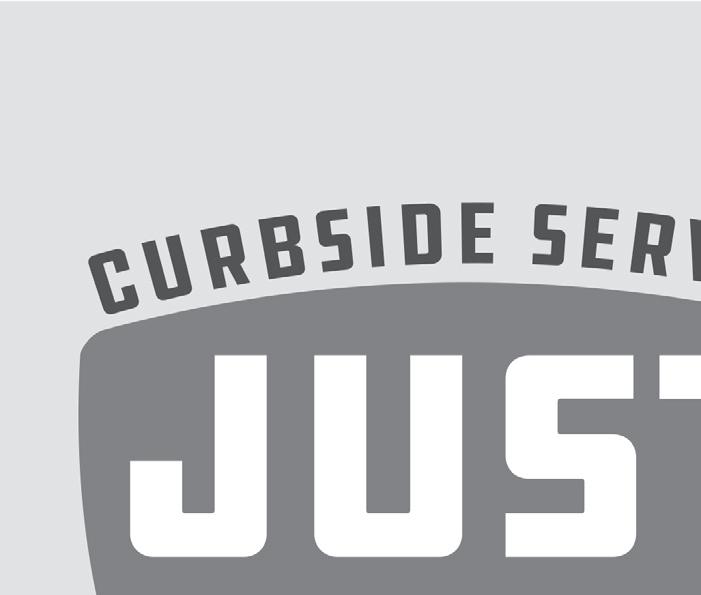
I always think these awards shows are going to be so great. And they are, in theory. But after about 20 minutes, I have to admit, I get kind of bored. I mean, the fun part is just talking about who will win. And I guess next week the fun part will be talking about who really deserved to win. But the actual show is pretty boring. That’s fine for awards shows, Capricorn, but not for your life. Love the moment you’re in. Not just the one coming and the one passed.
Just when I was getting used to writing 2015 on all my checks, I look up and it’s 4713. At least, according to some versions of the Chinese calendar, and who am I to argue with 1.26 billion people? One great thing about Chinese New Year, is that it happens a good ways after January 1. So, Aquarius, if 2015 is already off to a lousy start, dump it. Start over with me in 4713.

What else do I need for my epic Oscar party? I’ve got Coke and popcorn and ballots. I’ve got several engraved replica novelty statuettes. I’ve got hundreds of feet of red carpet covering my front porch and driveway and sidewalk. Oh, no Pisces! I forgot to invite my friends! Pisces, all the preparation in the world isn’t enough if you’ve got nobody to share it with. Don’t get caught up in details. Get caught up in people.
The nian is a terrifying mythical dragon-beast! People once believed that the nian roamed the Chinese countryside devouring crops, livestock, and children. Fortunately it has a silly weakness. The nian is terrified of loud noises...and the color red. So, a good Chinese new years party has lots of fi recrackers and red lanterns. Welcoming a new season means chasing away old monsters. Th is week, Aries, don’t hide from your fears, make them hide from you.
Mr. Mysterio is not a licensed astrologer, an acclaimed director, or a nominee for best anything. You can email Mr. Mysterio at mrmysterio@thecontributor.org, or check in on Twitter at twitter. com/mrmysterio. This set of Hoboscopes originally ran in a 2015 edition of The Contributor.




“Character is like a tree and reputation like its shadow. The shadow is what we think of it: the tree is the real thing.” – Abraham Lincoln
The shadow cast by the 111th Tennessee legislature has shed a dark pall of corruption over the entire state. Accounts of the excessive use of illegal drugs in the state house, debauchery, and cronyism at the highest levels of our representative government have been shocking to say the least. The disrespect and contempt shown to our citizens of color, women, children, families, and for the rule of law by our leaders strikes at the very root of democracy in the state. It’s time we all realize that the Tennessee state tree is rotten to the core and needs to be uprooted.
Tennessee suffers from an astonishing lack of leadership. Leadership requires integrity and strong character. Our elected officials should at the very least be honest and show consistent and uncompromising adherence
to strong ethical values. Leaders should care about all of the citizens under their sway and should meet the expectations of society as a whole. Our leaders must be held accountable for their actions and must serve as positive role models for the citizenry. It is disappointing to know that the leadership of the 111th Tennessee legislature failed in all of these areas.
The Tennessee legislature has attained its supermajority by gerrymandering districts for specific candidates and by stoking the fires of fear between various constituencies. They emphasize social issues to keep the religious on their side, though their responsibility is not the church but the state. They support candidates with questionable backgrounds and conflicts of interest so that they can keep them in line when leaders make questionable ethical decisions. They use bribery to achieve their goals. It’s past time that the good peo-
ple of Tennessee opened their eyes to what is being done at the legislature in their name.
In the last legislative session, two young activists of color were arrested and carried off in shackles for protesting the lack of representation for the poor by the leaders of Tennessee. And later, the speaker’s office attempted to frame one of the activists with false evidence. Take that, those who dare raise their voices for the voiceless. An accused serial abuser was overwhelmingly elected in his district and once at the legislature was appointed as chair of the education committee. Take that, women of Tennessee. More than 150,000 children were moved off of their Tenncare medical benefits without notice. Take that, children and families of Tennessee. Who are these guys?
But more than who they are, who are we, Tennessee? We allow ourselves to be manipulated into electing these unethical people to
represent us. We have to stop voting for our representatives just because they have an R or a D next to their name on the ballot. We have to find out who these candidates are as people, as human beings. Corruption and political dirty tricks will reign unless we demand ethical candidates for public office.
The speaker of the house and his aid are now embroiled in several ethical controversies. The aid has resigned and has been replaced by someone with ethical problems of his own. (Isn’t there anyone in Tennessee government with character?)
Calls for the speaker’s resignation persist and are thankfully growing louder. We can only hope that the members of the legislature can muster the guts and the character to rid out politics of the cancer that the speaker represents. And to the person who started this ball rolling by turning the highly informative text messages over to the media—good on you, and please keep ‘em coming!
I have a story I’d like to tell you about my life when I was a drug addict. Back in 2007 I made the decision that I was tired of being on drugs, neglecting to eat, neglecting to buy my medicine, almost losing my place. Also, my mother was scared of me because I had tattoos on my head. I got the tattoos when I was living at a tattoo parlor because my mom forced me to move out of her house, which is where this whole story begins.
When I got booted out, I went homeless for a minute sleeping on the streets and stuff. So I ended up at this tattoo parlor off of Dickerson road and they let me sleep there and gave me food and eventually let me run errands for them, clean the place up, and be a night watchman (I’d seen a lot of things going on outside and would call the law).
I felt obligated to ask them how I could show my appreciation for what they were doing for me. Just out of the blue they said, “Let us tattoo your head.” And I said, “WHAT?” So I let them tattoo my head. The first thing they put on my head was horns. Well, the second thing they put on my head was a question mark with three stars. The third thing they put on my head was a skeleton angel. The fourth thing they put on my head was a bloodshot set of big eyes. I have an answer for everyone of those tattoos. I’m not going to tell you what all the answers are right now (maybe there will be more in the paper about it eventually).
Eventually while I was at the tattoo parlour, I stole from them because I was still doing drugs
and they didn’t know it at the time. But I have a heart and I can’t stand to take from somebody and not let them know what I’ve done. So I told them what I stole and everything and they told me I had to pay it back, but they told me I’d have to leave. So i said, well I’ll pay you back next month when I get my check, and I did.
So, I went to the Mission first, and when I found out about the Room in the Inn I went to the Room in the Inn. I had spent a year at Room in the Inn going through programs and going to different church and in 2005, I got me a place to live. I was clean for two weeks after I moved, but the neighbors kept knocking on my door asking me if I’d ever experienced crack cocaine. Yes I had. Thing is, I was clean and sober until a woman blew it in my face and it triggered me. I’m not going to lie to you, I was back on it like stink on you-know-what. It happened because I didn’t have the willpower to keep her away from my door because I was trying to be a good neighbor. So I started running a drug house, a prostitution house, and also I was dealing in and out of that house to make my money to get my drugs.
So, in 2007, I said enough is enough. After my oldest brother passed away, I made my mind up that it was time to make a change in my life that I wanted off of drugs bad enough I’d have to do something real drastic.
So what I done — and understand I am not bragging — was I broke into a place three times in one day because I wanted to get caught. Each time I went, I got enough to get high on to support my habit because
I was jonesing real bad. But the third time I went back, I did not wear a hat or a cap and remember I had tattoos on my head.
The police showed up at my door and asked, "Did you break into this man’s house?" Yes sir. Well, I really didn’t break in to it, but I’m not bragging, but the door was open and unlocked, but I said yeah I did because I wanted to go to jail and get off of drugs. I was hoping I wouldn’t go away for a long time, but I got 10 years.
I got paroled after six and a half years and that’s when the Room in the Inn accepted me to come live with them again. I am now coming up on 12 years clean counting prison time and jail time and Room in the Inn time. Clean for 12 years on May 18! I feel very very blessed being locked up just to be off of that drug. I know it’s drastic to do that but I did what I had to do to get away from the people I needed to get away from.
To stay off of drugs, you have to stay away from people doing drugs. You have to stay away from people talking about drugs unless you’re in like an NA or AA program or meeting, which by that time you’ve got yourself clean it ain’t gonna bother you to talk about it. I talk about it because it keeps me clean.
Since I’ve been at Room in the Inn the second time, a friend told me about The Contributor newspaper. After a few months we moved to a new magazine, which did not sell worth a dern. So, we moved back to the newspaper and the office was located at the Room in the Inn for a while. But what I’d
like to tell you is The Contributor has been one of the best things to happen to me in my whole life. I signed up, got my ID and I was very very blessed to have that ID because I was now a working vendor of The Contributor
I love doing it. Oh God I love doing it! I meet wonderful people, play my music, I sing. I was downtown, but things didn’t work out because amp-wise I couldn’t hear my music without an amp, so I’m not bragging again, but I got 22-days, two years ago for playing my music downtown and a fine, which hurt me very badly because two days before they arrested me on that, I was supposed to be on America’s Got Talent. That really hurt me because I feel like I got a chance in the music business as old as I am and the gifts the Lord gave me, I want to be able to do something with them.
I want you people to know The Contributor is a great thing. Just because some of the people out there are homeless and trying to get their lives together, don’t look down on us.
I’ve got my own place now. I pay rent and have to pay for medicine and buy food during the rest of the month. Some of my money I invest back into my newspapers, because that helps me keep a business going that I love. I love doing what I’m doing. I meet wonderful people coming from all over the world and I love these people and entertaining and telling my story and I love writing. I never knew I had that ability to write. I never knew I had the ability to do things I’m doing right now. It really blows my mind.
People like me have an opportunity to change their lives. Through the grace of God, I did.







